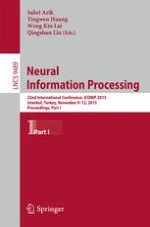2015 | OriginalPaper | Buchkapitel
Classification of High and Low Intelligent Individuals Using Pupil and Eye Blink
verfasst von : Giyoung Lee, Amitash Ojha, Minho Lee
Erschienen in: Neural Information Processing
Aktivieren Sie unsere intelligente Suche, um passende Fachinhalte oder Patente zu finden.
Wählen Sie Textabschnitte aus um mit Künstlicher Intelligenz passenden Patente zu finden. powered by
Markieren Sie Textabschnitte, um KI-gestützt weitere passende Inhalte zu finden. powered by
